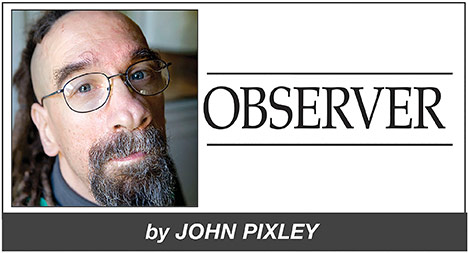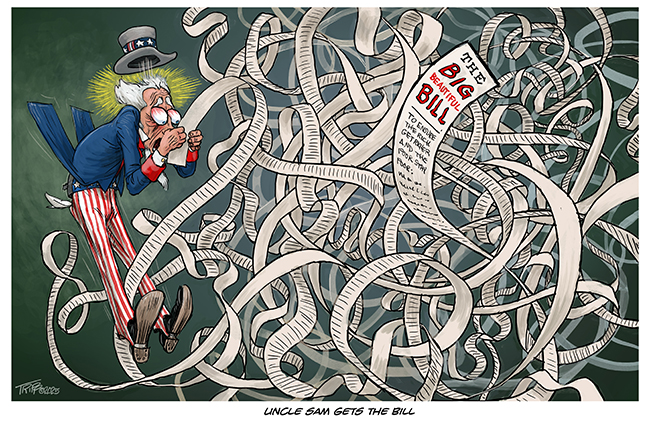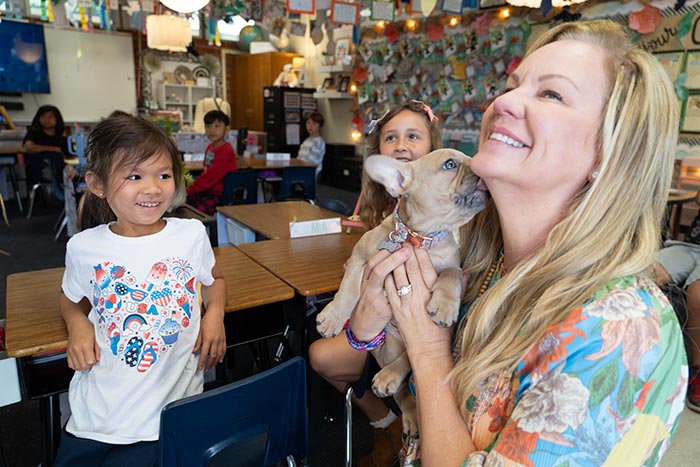Late night for Claremont City Council as traffic issues dominate meeting
It was standing-room only in the Claremont City Council Chamber Tuesday night as council members tackled a series of ongoing city disputes. Parking issues at the Claremont Hills Wilderness Park were among the night’s heavy hitters.
After nearly 2 hours of public comment, the Claremont City Council unanimously agreed to add further parking restrictions to streets near the bustling wilderness area.
In addition to previously designated “no parking” zones at Mt. Baldy Avenue and Mills, permit-only parking will be enforced 24 hours a day on Pomello Drive, from Mills Avenue to the west end, as well as Dillard Avenue, St. Gregory Street, Pennsylvania Place, Brigham Young Drive, Independence Drive, Elmira Avenue, Vincennes Court, Alamosa Drive, from Mills to Bonnie Brae, and Mills Avenue, from Pomello to Alamosa.
After public comment and an initial vote, the council added Pomello Avenue, from Mills to Grand, and Alamosa, from Mills to Grand, to the list of restricted parking areas—under the condition that a petition with a majority of residents’ signatures be submitted to the city. The council revoked its previous decision to defer the 2 additional street segments to another commission review.
It’s a temporary fix—permit parking zones will sunset in 2 years, during which time the city will be working to create a wilderness park master plan to holistically deal with parking and overcrowding issues. In the meantime, the council hopes restrictions will bring some level of respite for concerned wilderness area homeowners.
“The master plan will probably take about a year to develop. I’m not going to sit here for a year and not do anything about this,” said Councilmember Larry Schroeder. “We’ve got to do something.”
Nearly 30 residents weighed in, a few wary of the restrictions, but a majority siding with Mr. Schroeder’s call for immediate action as the master plan is developed.
“I’ve never seen it this bad,” said David Choi, who said he has lived near the wilderness park for the last 24 years. “The character of the neighborhood is really changing…this is a temporary plan to evaluate the immediate problem we have right now.”
Since the opening of the park’s expanded north parking lot, and enforcement of the lot’s now metered parking, many locals have vocalized concern that eager wilderness park hikers are finding loopholes to avoid paying. In recent months, several residents living near the park, particularly those on Pomello and Mills, have share with the council that their streets have become alternative parking destinations. On the weekends, Mills Avenue homeowner Margaret Jeffreys says she needs a passenger to get out of the car to help her out of her driveway because cars are parked bumper to bumper across her street.
“It is terrifying,” she shared. “It’s just a miracle there hasn’t been an accident on Mills.”
The council hopes to mitigate the problem before it gets worse.
“It’s not just about the wilderness park,” said Councilmember Corey Calaycay. “It’s about respecting our neighborhoods.”
“It is terrifying,” she shared. “It’s just a miracle there hasn’t been an accident on Mills.”
The council hopes to mitigate the problem before it gets worse.
“It’s not just about the wilderness park,” said Councilmember Corey Calaycay. “It’s about respecting our neighborhoods.”
Traffic calming measures approved
In another attempt to preserve neighborhood well-being, the council unanimously approved $165,000 in traffic calming measures to address speed concerns on 10 local streets. Measures will include adding striped parking, bicycle lanes and driver feedback signs among others to streets that include American, College, Mountain, Mt. Baldy, Pomello, Radcliffe, San Jose, Scripps and Scottsbluff.
In an unexpected move last fall, council members heeded residential concern and opted to evaluate traffic calming measures before raising speed limits, even if it meant speeds on those streets would be temporarily unenforceable.
A speed survey conducted in 2012 suggested that speeds needed to be raised in order to be in compliance with state mandates. California law requires that a city’s speed limits reflect the local traffic speeds, and the survey showed a majority of the drivers traveling along those 10 street segments were above the speed limit enough that the speed needed to be increased by 5 mph to comply with state code.
In the past, city officials were allowed to set a speed limit within 5 miles per hour of the speed a majority of cars were traveling at. If a car was traveling at 28 miles an hour in a 25 mph zone, the city could opt to stay at 25 mph instead of raising the speed to 30.
However, recent changes have been made to more stringently restrict the freedom cities have to set the speed limit. Now, the speed must be set to the nearest 5 mph. If a majority of cars are going 28 mph in a 25 mph zone, officials are mandated to raise the speed limit to 30 mph by state law. School zones and other restrictions continue to apply and are not affected by these new rules.
While the city will hold off on raising the speed on a majority of those designated streets, council members did approve raising the speed on Mt. Baldy Road, from Padua Avenue to the east city limit, to 50 mph in order to be properly enforced.
In terms of the other streets, the council hopes those driving in the city will take their queue and slow down before speed limits go up.
“The full responsibility still lies with us, the drivers,” Mayor Opanyi Nasiali noted.
Another speed survey will be conducted in 4 months time, at which time speed limits on those streets will be reconsidered. City staff is working to reclassify Scripps, Radcliffe and Scottsbluff as local roads in hopes of having the ability to keep speeds on those streets at 25 mph.
—Beth Hartnett
news@claremont-courier.com










0 Comments